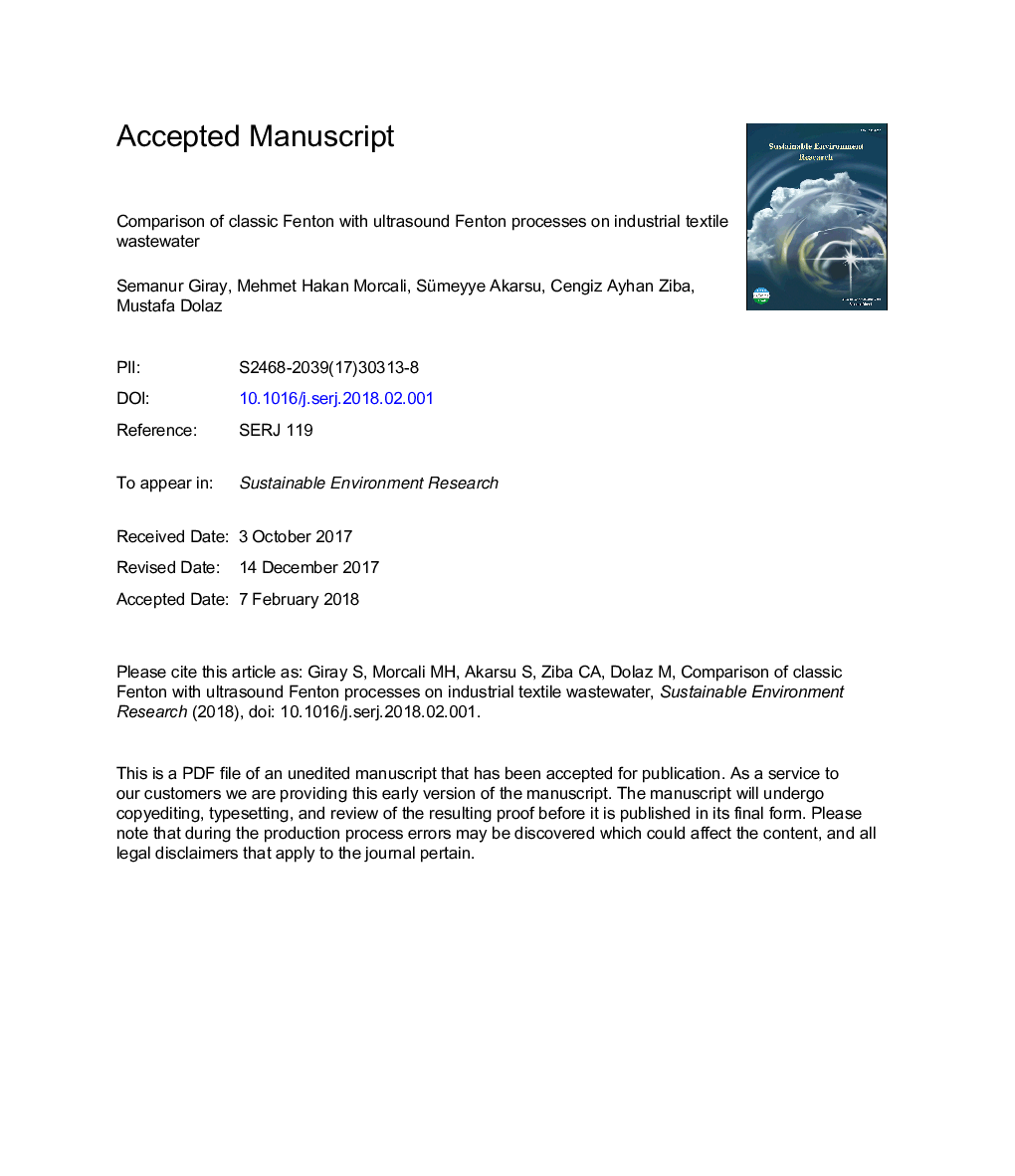| Article ID | Journal | Published Year | Pages | File Type |
|---|---|---|---|---|
| 8862920 | Sustainable Environment Research | 2018 | 20 Pages |
Abstract
This study provides a comparison between classic and modified (i.e., ultrasound) Fenton process on the industrial textile wastewater. For this purpose, the classic, and ultrasound Fenton process were investigated and compared using the following parameters: pH of solution, amount of ferrous ion (Fe(II)), and hydrogen peroxide as well as reaction time. With these parameters, degrading organic compounds (i.e., decolorization percentage) was calculated. The best decolorization percentage (95% for Pt-Co) was found using 0.10 g Lâ1 of Fe(II), and 2.20 g Lâ1 of H2O2 for 90 min at pH 3 for classic Fenton process. Similar experiments were carried out using 35 kHz ultrasonic irradiation, and the best decolorization percentage (99% for Pt-Co) was obtained via 0.05 g Lâ1 of Fe (II) and 1.65 g Lâ1 H2O2 for 60 min at pH 3 for ultrasound Fenton process. The results showed that decolorization increased with decreasing amount of chemical for the ultrasound Fenton process. Additionally, the contact time was decreased by comparing performance with classic Fenton process. In light of these results, the ultrasound Fenton process can be used for decolorization of textile wastewater to save reaction time and chemical costs. Also, the decolorized water (e.g., treated water) may be reused in the plant for washing the textile materials after applying ion exchange process.
Related Topics
Life Sciences
Environmental Science
Environmental Engineering
Authors
Semanur Giray Cetinkaya, Mehmet Hakan Morcali, Sümeyye Akarsu, Cengiz Ayhan Ziba, Mustafa Dolaz,
